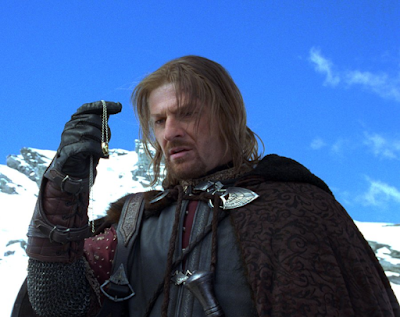Tolkien and World War I
In honor of the biopic Tolkien, which is coming out in two weeks, this post is focused on where we can find Tolkien’s experiences from World War I in his writing. Though many know Tolkien served in World War I, not many are familiar with how it impacted his writing even decades later. Though we likely will never know the extent of which his experiences made their way into the legendarium, here we will explore which parts of his work likely originated from Tolkien’s personal adventure in one of most widespread wars in human history.
The Fall of Gondolin
There is no place where the reality of World War I is more evident than in The Fall of Gondolin. There, the city is prosperous and the people could be described as living happily and in harmony, all while safe from the brutality that plagued the rest of the world. At the time, Gondolin resembled a Utopia, yet tensions between two characters caused one solitary event to bring ruin. Similarly, tensions which existed in Europe before World War I allowed one solitary event to bring widespread war. Though Maeglin’s eventual betrayal of Gondolin is not comparable to the assassination of Archduke Ferdinand which started World War I, both show how a simple action can cause so much destruction and ruin.
In the battle itself, the amount of detail is overwhelming. Tolkien included vivid details along with descriptions of who fought where. This level of detail is unique among his other first age works, where there is usually only a broad outline of occurrences which goes to show how much the story meant to him. He even started it before World War I was over. Though not an allegory, it’s easy to imagine how the horrors Tolkien experienced found an outlet in this story. Moreover, Tolkien had no way of knowing when he started The Fall of Gondolin whether the war would end with his country falling like Gondolin.
Scenes from the Front
On another note, the most recognizable element of World War I in Tolkien’s works is the desolation of the lands of Mordor, Gorgoroth, and Anfauglith, which literally means “gasping dust”. Since we have pictures from the front where the land looks indistinguishable from the plains in front of Mordor’s gates it is obvious they are one and the same. The brutal weapons deployed by both sides which included poisonous gases and shell-fire created these hellish landscapes which Tolkien accurately portrayed in his stories.
Rachel Kambury suggests that the Dead Marshes were also inspired by common sights in World War I. She says:
“The Dead Marshes are impossible not to recognize by anyone at all familiar with trench warfare...pits and pools and the ghastly faces of the dead appearing from the mud, a site of horror.”
Because the inspiration for the Dark Lords’ territory was likely the front, it isn’t too much of a stretch to consider the Dead Marshes were inspired by the same source.
Besides for the desolate plains and the Dead Marshes, the shriek of the Nazgúl might also be a sound straight out of the war. With bombs, gunfire, and countless other weapons flying through the air, World War I had more than its share of frightening sounds. It is possible the sounds of bombs, shells, and mines were the source of the cry of the Nazgúl which is described as
“A long-drawn wail...like the cry of some evil and lonely creature. It rose and fell, and ended on a high piercing note.” (FOTR)
The effect of the Nazgúls’ cries on those who heard them is also similar to shell-shock, the condition which often occurred when both soldiers and civilians heard the bombings (Kambury).
“They sat and stood, as if suddenly frozen...chilling to the blood." (FOTR)
Shell-shock even occurs in the Lord of the Rings when Frodo becomes blind after hearing the cry of the Nazgúl in Mordor. Additionally, we are certain he had shell-shock since blindness is a common symptom.
Tolkien
The trailer to Tolkien brings up another interesting insight about the Balrog. During the trailer, a Balrog unmistakably forms in the flames of an explosion. Though uncertain, it is likely that Tolkien could have imagined a balrog in the shells he saw daily while serving in World War I.
Tolkien’s experiences in World War I were traumatizing. But instead of letting his experiences overwhelm him, he used them to help create a magnificent world with a history that goes back to before the creation of the world. Now, it looks like Tolkien is going to show some of the events which inspired many of the legends we know and love. If you see any other cases of World War I in Tolkien lore, please comment below. And remember to stay tuned for feedback on Tolkien, which is coming out in less than two weeks.
Works Cited
Kambury, Rachel. War Without Allegory: WWI, Tolkien, and The Lord of the Rings. The United
States World War One Centennial Commission. Oct 8, 2018. https://www.worldwar1
centennial.org/index.php/articles-posts/5502-war-not-allegory-wwi-tolkien-and-the-lord-of-
the-rings.html. Date Accessed Apr 25, 2019.
Tolkien, J.R.R. The Fellowship of the Ring 1955. Del Rey. Date Accessed Apr 25, 2019.
Tolkien, J.R.R. The Return of the King. 1955. Del Rey. Date accessed Apr 25, 2019.


Comments
Post a Comment